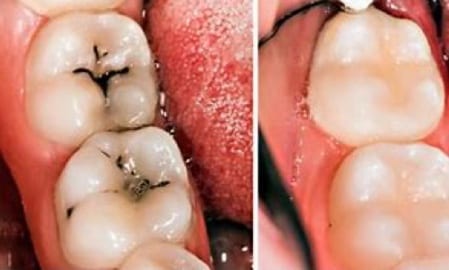Even with attentive at-home oral care and regular visits to the dentist, sometimes children, like adults, need dental restoration treatments to bring healthy smiles back to their faces. Dr. Kasey’s specialized pediatric training allows him to treat even the smallest of patients when they are faced with tooth decay.
Together we will discuss your child’s restorative needs and create a treatment plan with the most conservative options to repair and prevent further damage. Dr. Kasey understands that children’s needs are different from adults, from both a dental and emotional standpoint, and treats your child using the gentlest techniques possible.
Dental decay, or cavities, is the most common health problem affecting children today. Cavities are infections in the teeth that cause tiny openings or holes in the hard surface of the tooth. We as dentists are specially trained to remove the infected part of the tooth and restore it to its original structure and function.
FILLINGS
 The most common treatment of cavities is fillings. White, or composite fillings are tooth-colored, mercury -free plastic resin materials. They chemically bond to the tooth, offering support to the rest of the tooth structure. This helps to prevent breakage, as well as provide insulation from extreme temperatures.
The most common treatment of cavities is fillings. White, or composite fillings are tooth-colored, mercury -free plastic resin materials. They chemically bond to the tooth, offering support to the rest of the tooth structure. This helps to prevent breakage, as well as provide insulation from extreme temperatures.
NO DRILL FILLINGS (ICON)
![]() ICON Resin Infiltrate is a new dental procedure to improve the appearance of white spots (decalcifications) on tooth surfaces. Decalcifications are “pre-cavities” and if left untreated can progress into dental cavities that would then require traditional restorative treatment.
ICON Resin Infiltrate is a new dental procedure to improve the appearance of white spots (decalcifications) on tooth surfaces. Decalcifications are “pre-cavities” and if left untreated can progress into dental cavities that would then require traditional restorative treatment.
With the ICON Resin Infiltrate there is no need for removal of tooth structure (no drilling) and no anesthesia. The goal is to arrest the progression of early cavity lesions.
In one visit the placement of the infiltrate can penetrate the teeth surfaces to preserve enamel structure and return the color of the teeth to their natural state.
CROWNS
 If a tooth’s structure is compromised by extensive dental decay, full coverage crowns are the preferred restorative material.
If a tooth’s structure is compromised by extensive dental decay, full coverage crowns are the preferred restorative material.  Stainless steel crowns are used to treat back teeth because they are stronger than white crowns, being able to withstand the biting force needed for chewing. White crowns are used on the front teeth to maintain structure and esthetics.
Stainless steel crowns are used to treat back teeth because they are stronger than white crowns, being able to withstand the biting force needed for chewing. White crowns are used on the front teeth to maintain structure and esthetics.
BONDING
 When a front tooth is chipped or damaged, a matching-color white filling is “bonded” to the tooth to restore proper shape, color, and function.
When a front tooth is chipped or damaged, a matching-color white filling is “bonded” to the tooth to restore proper shape, color, and function.




